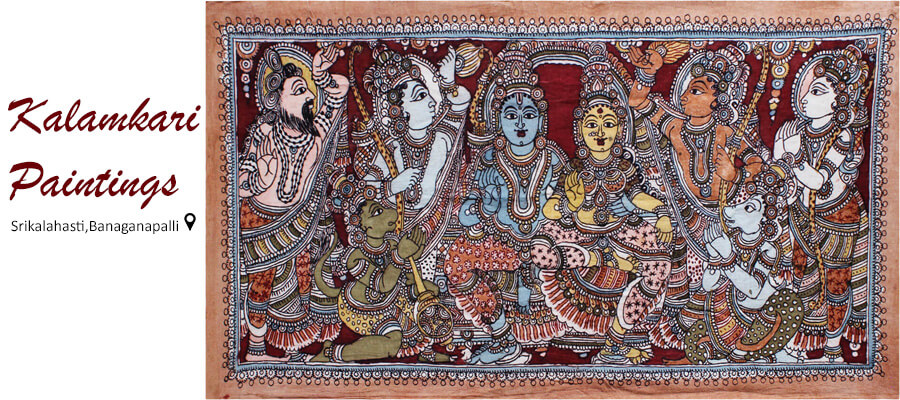
Kalamkari is a term that has originated from Persian words - qalam (pen) and kari (craftsmanship), which literally means drawing with a pen. Thestate of Andhra Pradesh is known for the sheer variety of art works and craftsmanship and one such exquisite art form is that of ‘Kalamkari’ designs, paintings and priceless print work.
Kalamkari is the art of painting cotton fabrics with a kalam i.e. pen, a sharp pointed pierced bamboo that regulates flow of colour on the fabric. This is reflected in a completely beautiful tradition called Srikalahasti Kalamkari or Kalamkari Paintings. Kalamkari art is unique as it uses colour medium to portray mythological characters in the form of paintings. The popularity of this exquisite form of paintings was widespread in Andhra region hundreds of years ago. Kalamkari is believed to have originated as a result of the influence of Mughals and Golconda Sultanate rule.
Andhra Pradesh is renowned for this enticing and appealing art form that has fascinated art collectors and inspired researchers to document its making. The major forms are Srikalahasti in Chittoor district, and Machilipatnam Kalamkari, created in Krishna district. Srikalahasti Paintings represents a classic style of Kalamkari work, based on the dyed hand-painting of fabrics. It is produced mainly in Srikalahasti town of Chittoor district in Andhra Pradesh.
Srikalahasti paintings are based completely on the brush while the Machilipatnam style employs the block-printing technique. The popularity of this form of painting has earned worldwide reputation for Andhra Pradesh.The highlight of this craft lies in the richness of these colours which are produced as a result of the rapid absorption of the natural dyes, through a special mordant dyeing process. Srikalahasti Kalamkari was registered for geographical indication from the state, under handicraft goods by the Geographical Indications of Goods (Registration and Protection) Act, 1999.

